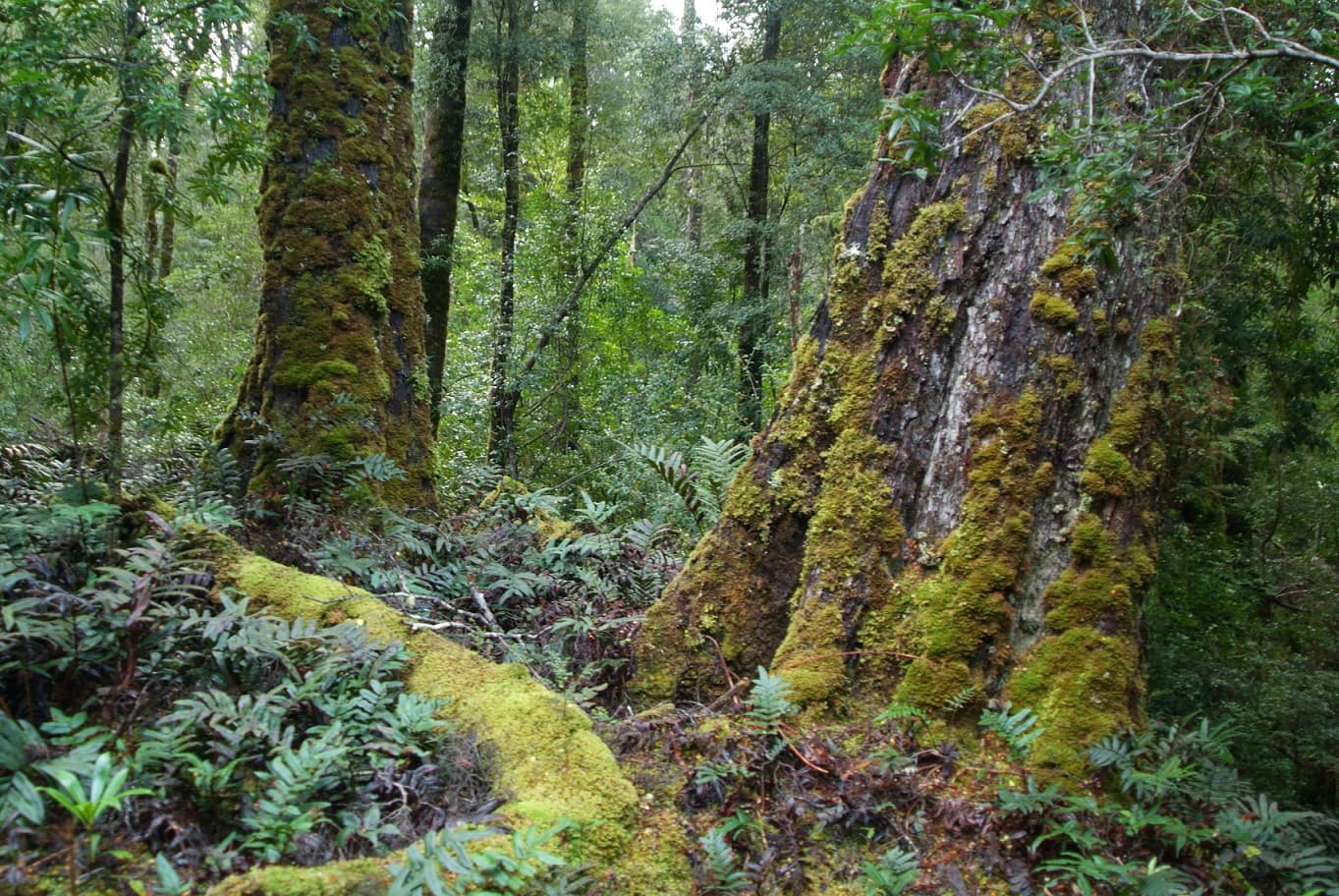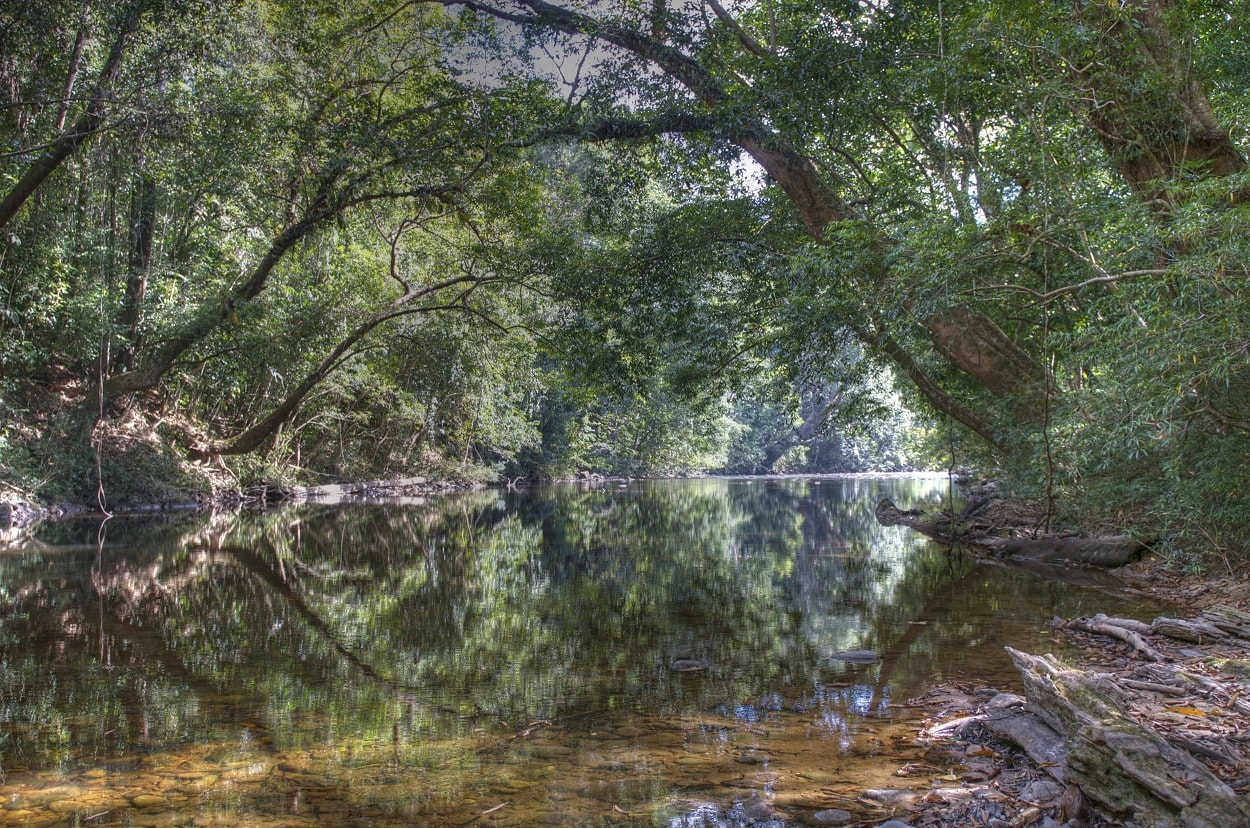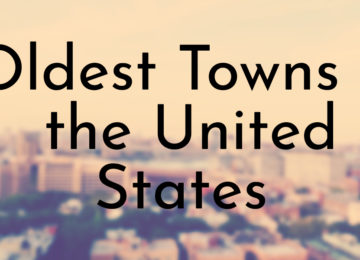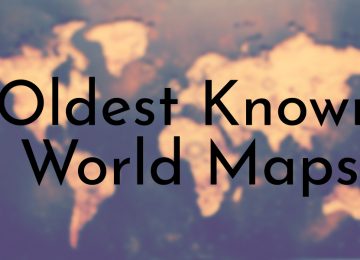Some natural forests in the world are so old, that it is difficult to even put a date to them. However, thanks to modern scientific techniques, scientists are now able to roughly pinpoint the age of some of the world’s oldest forests.
Still present on almost every continent (sorry Antarctica), there are ancient forests in nearly every corner of the world.
While all of the forests on this list are protected sites and remained largely untouched for many millennia, in recent years, nearly all of the forests — particularly the rainforests — have had large portions destroyed by human activities, especially logging. Fortunately there are conservation laws in place and many people have dedicated their lives to ensuring that these forests are around for future generations.
11. Tarkine Rainforest
Age: Unknown for sure – at least 3,000 years
Location: North west Tasmania, Australia
Area: 695 sq mi (1,800 km²)
Forest Type: Cool-Temperate Rainforest

The Tarkine Rainforest’s exact age is unknown, but it is believed to be quite ole and is at least 3,000 years old like the forest’s oldest trees.
Like all of the rainforests on this list, the Tarkine Rainforest has been critically threatened by logging and other human activities. Fortunately, there is a strong conservation effort to save the remaining Tarkine Forest.
In 2005, the Tasmanian and Australian governments agreed to protect an additional 70,000 hectares of rainforest in the Tarkine from logging.
Did You Know?
The Tarkine Rainforest is home to the world’s largest freshwater crayfish, Astacopsis gouldi, also known as the Giant Freshwater Lobster
10. Ancient Bristlecone Pine Forest
Age: over 5,000 years
Location: Inyo National Forest, White Mountains, California, USA
Area: 43.75 sq mi (113.3 km²)
Forest Type: Bristlecone Pine Forest

As its name suggests, the Ancient Bristlecone Pine Forest is renown for its many Great Basin bristlecone pines, which are some of the oldest trees in the world. The Ancient Bristlecone Pine Forest is most likely much older, but it is at least 5,000 years old (the age of its oldest trees).
There are several different notable trees within the Ancient Bristlecone Pine Forest, including Methuelah and the Patriarch Tree, which is the world’s largest known bristlecone pine.
The Ancient Bristlecone Pine Forest is open to visitors, but the locations of some of the forest’s oldest trees are not made available to the public.
Did You Know?
Bristlecone pines were named for the long prickly “bristle” on the immature cone.
9. Yakushima Forest
Age: over 7,000 years
Location: Yakushima, Japan
Area: 73.2 sq mi (189.6 km²)
Forest Type: Warm-Temperate Ancient Forest

Yakushima Island was designated a UNESCO World Heritage Site in 1993 and contains the remnants of a warm-temperate ancient forest that is unique to this part of the world. While no one knows for sure how old Yakushima Forest is, one of its oldest trees, the Jōmon Sugi (yakusugi (Japanese cedar)), is believed to be over 7,000 years old!
In addition to being an ancient forest, Yakushima Forest is one of the world’s most beautiful forest, with many visitors noting that it looks like the scene of a fairy tale.
Red-bottomed macaques (Yakushima macaque) and a variety of sika deer (yakushika) are native to Yakushima Island and forest. According to some visitors, the macaques and deer have a symbiotic relationship and the monkeys sometimes ride on the backs of the deer.
Did You Know?
Yakushima Forest served as the inspiration for the landscape of the popular animated film, Princess Mononoke.
8. Pando
Age: over 80,000 years
Location: Fishlake National Forest, Utah, USA
Area: 106 acres (43 ha)
Forest Type: Clonal Colony of Quaking Aspen

Despite appearing to be an enormous grove of quaking aspens, Pando is not exactly a forest, but it is acutally a single living organism! Pando is what is known as a clonal colony, meaning that each individual tree is a clone of the original tree.
This unique organism is not only one of the oldest living trees/“forest”, it is also one of the largest single organisms in the world — Pando covers an area of 106 acres (43 hectares).
Although Pando has survived for over 80,000 years, it may be dying. In recent years, scientists have noticed that Pando is not regenerating like it should. Instead, mule deer and cattle are eating Pando’s young saplings before they can grow bigger.
Did You Know?
Pando was first discovered in 1968 by researcher Burton V. Barnes, who learned that it was a single organism after many years of study. Barnes aptly named the grove “Pando”, which means “I spread” in Latin.
7. Kakamega Forest
Age: 2+ million years
Location: Kakamega and Kisumu Counties, Kenya
Area: 91.89 sq mi (238 km²)
Forest Type: Tropical Rainforest

Kakamega Forest is a few million years old and is the only rainforest in Kenya. It is believed that Kakamega Forest is all that remains of a tropical rainforest that spanned from coast to coast of the Africa across the continent’s the equatorial line.
As a tropical rainforest, Kakamenga Forest looks more like the rainforests of Central and West Africa than the other forests in East Africa.
Like most of the forests on this list, Kakamega Forest is home to plants and animals that cannot be found anywhere else in the world. In Kakamega Forest, there are over 60 species of ferns, 150 species of trees and shrubs, and 170 species of flowering plants, including 60 species of orchids with nine species endemic to this forest.
Did You Know?
Unlike some of the better known forests on this list, Kakamega Forest is a hidden gem and not typically a tourist hotspot. However, Kakamega Forest welcomes visitors and there are a number of guided tours and clearly marked walking trails.
6. Réunion National Park
Age: 2 – 2.5 million years
Location: island of Réunion (near Madagascar; governed by France)
Area: 406.89 sq mi (1,053.84 km²)
Forest Type: Low-Altitude Tropical Rainforest

Réunion National Park only became an officially protected site on the island of Réunion in 2007. However, the forested lands protected by Réunion National Park are nearly as old as the island, which emerged over 3 million years ago.
The island sits atop a volcanic hotspot and there are two volcanoes on the island, one active and the other dormant. Both slopes of the two volcanoes are heavily forested.
Réunion National Park contains 43 of the 2,000 vertebrae species on the island and most of the 1,600 recorded native plant species. While most of Réunion National Park is untamed nature, there is a small cultivated interior where farming livestock and crops.
Did You Know?
Réunion National Park covers about 42% of the entire island.
5. Caspian Hyrcanian Mixed Forests
Age: 25 – 50 million years
Location: Shores of the Caspian Sea of Iran and part of Azerbaijan
Area: 21,300 sq mi (55,100 km²)
Forest Type: Temperate Broadleaf and Mixed Forests

Stretching along the coast of the Caspian Sea and the northern slopes of the Alborz Mountains, the Hyrcanian Forests cover five different Iranian provinces: North Khorasan, Golestan, Mazandaran, Gilan, and Ardabil.
Golestan National Park is also located with the Hyrcanian ecoregion. The rest of the Hyrcanian Forests are in southeast Azerbaijan, including the Lankaran Lowland and the Talysh Mountains.
Did You Know?
The flora biodiversity in the Caspian Hyrcanian Mixed Forests is incredibly rich and 44% of the vascular plants known in Iran are found in the Hyrcanian region, which only covers 7% of the country.
4. Amazon Rainforest
Age: over 55 million years
Location: Brazil (60%), Peru (13%), and Colombia (10%); minor amounts in Venezuela, Ecuador, Bolivia, Guyana, Suriname, and French Guiana
Area: 2.1 million sq mi (5.5 million km²)
Forest Type: Moist Broadleaf Tropical Rainforest

The Amazon Rainforest may not be the oldest forest in the world, but it is the largest and most biodiverse tropical rainforest in the world. In fact, the Amazon Rainforest is so big that it represents over half of the Earth’s remaining rainforests.
About 10% of the world’s world’s known biodiversity, including endemic and endangered flora and fauna reside within the Amazon Rainforest.
In addition to a number of native plants and animals, a large number of indigenous people still live in the Amazon Rainforest. Around 9% (2.7 million) of the Amazon’s population is still made up of indigenous people — 350 different ethnic groups, more than 60 of which still remain largely isolated.
Although the Amazon Rainforest is important to the world’s climate function, over the last few decades many sections of the Amazon Rainforest have been destroyed because of deforestation.
Did You Know?
The Amazon Rainforest contains about 90-140 billion metric tons of carbon, which makes its destruction even more dangerous. If all of this carbon were released, it would significantly increase global warming.
3. Taman Negara
Age: over 130 million years
Location: Pahang, Terengganu and Kelantan, Malaysia
Area: 1,677 sq mi (4,343 km²)
Forest Type: Tropical Rainforest

Although the Daintree Rainforest is much older, Taman Negara is often billed as the “world’s oldest rainforest.” While it might not actually be the oldest, Taman Negara is extremely old with an estimated age of over 130 million years.
Taman Negara was the first officially protected area in Malaysia and was established in 1938. The Sultans of Kelantan, Pahang, and Terengganu (during King George’s Silver Jubilee), each set aside a piece of their lands to form Taman Negara.
Like many of the old forests on this list, Taman Negara is a popular tourist destination and one of its most famous attractions is the Taman Negara Canopy Walk – a 510 meter (1,673 feet) long suspension bridge spanning across the forest’s high treetops.
Did You Know?
Taman Negara was originally named King George V National Park, but was renamed after Malaysia gained its independence in 1957.
2. Borneo Lowland Rainforest
Age: about 140 million years
Location: Borneo (shared by Malaysia, Brunei, and Indonesia)
Area: 165,100 sq mi (427,500 km²)
Forest Type: Tropical and Subtropical Moist Broadleaf Forests

The Borneo Lowland Rainforest is about 140 million years old and covers much of the island of Borneo. In the past, the rainforest completely covered the island. The Borneo Lowland Rainforest as well as the whole island has a rich ecosystem.
Borneo is home to over 15,000 species of flowering plants, 3,000 species of trees, 221 species of terrestrial animals, and 420 species of birds that live on the island full time.
Despite being one of the world’s oldest and largest forests in the world, much of the Borneo Lowland Rainforest is being wiped out due to intense deforestation. It is estimated that Borneo has lost about 30% of its forest over the past 40 years.
Did You Know?
The Borneo Lowland Rainforest is the only place where the Bornean Orangutan, which is only one of two remaining species of Orangutan in the world, can be found in the wild.
1. Daintree Rainforest
Age: 180 million years
Location: North east coast of Queensland, Australia
Area: ~460 sq mi (1,200 km²)
Forest Type: Tropical Rainforest

With such a long and rich history, the Daintree Rainforest is home to about 30% of Australia’s frog, reptile and marsupial species in Australia, 65% of the country’s bat and butterfly species as well as 18% of all bird species.
There are also over 1,200 species of insects living in Daintree Rainforest. Additionally, the Daintree Rainforest is a popular tourist attraction and receives about 400,000 visitors every year.
Did You Know?
The Daintree Rainforest is so old that it is home to 12 out of the 19 total primitive flowering plant families found on Earth.
OTHER POSTS YOU MAY BE INTERESTED IN











